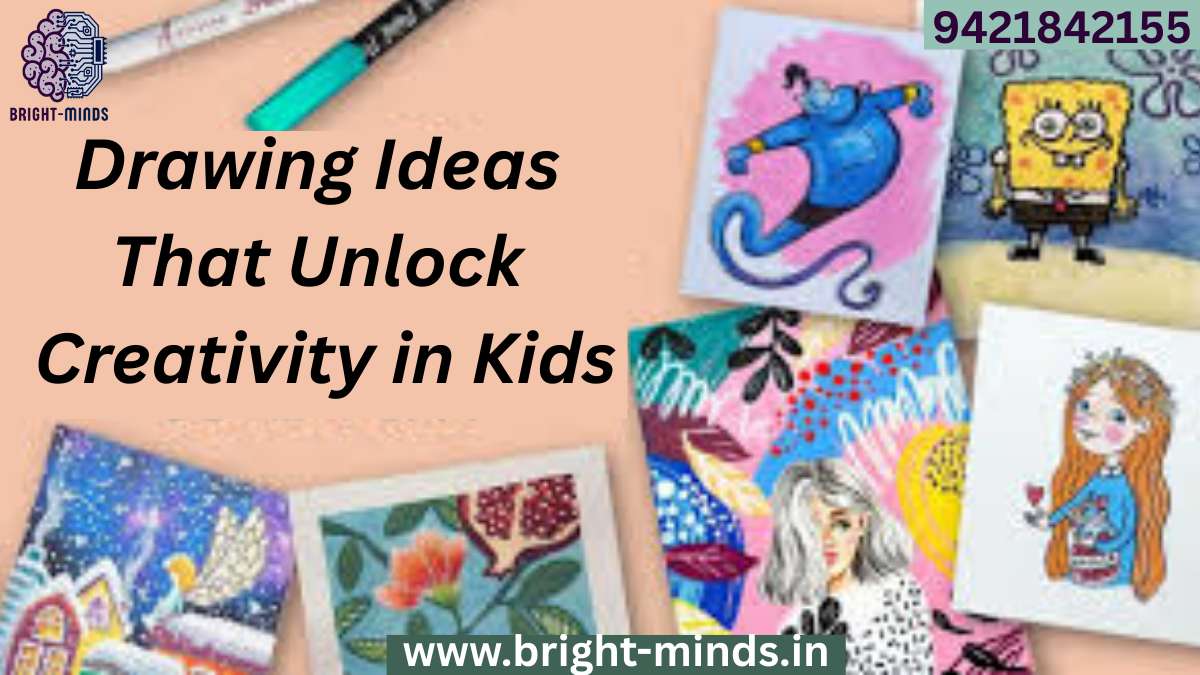- In a world bursting with digital noise and structured routines, creativity often takes a back seat. But if there’s one place where imagination should flourish—it’s in the minds of children. Helping kids express themselves through drawing is one of the simplest, most impactful ways to unlock their creativity, and it all begins with a few fun ideas, the right mindset, and a little encouragement.
Whether you’re a parent, educator, or part of a company team exploring creative engagement for young learners, understanding the fundamentals of drawing and how it nurtures a child’s cognitive and emotional development is key. Let’s dive into why drawing matters and how to inspire the next generation of creative thinkers.
Why Creativity in Kids Matters More Than Ever
In recent years, educators and psychologists alike have emphasized creativity as a critical 21st-century skill—right up there with literacy and numeracy. Market trends show a growing demand for creative thinking in STEM fields, leadership roles, and entrepreneurial ventures. By planting the seeds of imagination early, we prepare children not just for school, but for a rapidly evolving world.
Drawing isn’t just about art—it’s about thinking differently. It helps children:
- Develop problem-solving skills
- Improve emotional expression
- Enhance fine motor skills
- Boost memory and concentration
And here’s the kicker: creativity is trainable. With the right prompts and supportive environments, even the most reserved child can grow into a confident, imaginative thinker.
Simple Drawing Ideas to Spark a Child’s Imagination
Now that we understand the why, let’s get into the how. These beginner-friendly drawing ideas require nothing more than paper, pencils, and open minds. Try them at home, in the classroom, or as part of company-driven educational initiatives.
1. “Finish the Doodle” Challenge
Start with a squiggle or random shape on the page and ask the child to turn it into something creative—a dragon, a spaceship, or even a new kind of fruit. This kind of open-ended prompt helps kids think outside the lines (literally!).
2. Draw Your Dream Playground
Let children design their ultimate playground—maybe it has flying slides or a pool full of jellybeans. The act of designing something imaginative while thinking through spatial and functional ideas mimics early design thinking.
3. Story-Based Drawing
Tell the beginning of a story: “A penguin finds a magic paintbrush…” Then let the child draw what happens next. This builds narrative thinking, cause-and-effect logic, and imaginative visualization.
4. Nature as Inspiration
Take a walk, collect leaves or observe clouds, and then draw what you see—or what you think you saw. Maybe that leaf looks like a butterfly’s wing or a dinosaur. This helps connect kids with the world around them while developing observational skills.
5. Self-Portrait in Another World
Ask children to draw themselves on another planet, underwater, or in their favorite book. This boosts self-awareness while tapping into fantasy and fiction.
Real-World Applications and Industry Insights
So how does all of this connect to broader goals—especially in education or company settings?
Educational Trends
With the rise of STEAM (Science, Technology, Engineering, Art, and Math) learning, schools and learning platforms are integrating drawing as a way to approach complex concepts. For example, students learning about ecosystems can draw food chains or design imaginary species based on real traits.
Corporate & EdTech Involvement
Many companies, especially those in EdTech, are investing in creative learning programs that blend art with interactive technologies. As part of internal training or CSR initiatives, encouraging employees to contribute to or volunteer in creative education can spark company-wide innovation and empathy.
Mental Health & Creativity
There’s growing awareness of how creativity positively impacts mental health in both children and adults. Drawing is now used in therapeutic settings to help kids process emotions and trauma in a safe, expressive way.
Tips to Encourage Creativity Through Drawing
If you’re just getting started—whether you’re a parent or part of a company program—here are a few easy but powerful tips:
- Don’t Focus on “Perfect” Art – Encourage effort and imagination, not perfection.
- Use Prompts, Not Instructions – Ask questions like “What would your dream car look like?” instead of saying “Draw a car.”
- Create a No-Judgment Zone – Whether it’s a dragon with ten heads or a purple sun, let creativity flow freely.
- Display Their Work Proudly – A little recognition goes a long way in boosting confidence.
- Involve Adults Too! – Creative activities can become great bonding opportunities for families or company teams during community engagement projects.
Take the First Step: Explore Our Creative Learning Resources
Ready to unlock creativity in your child, students, or young learners in your community? Our platform offers a wide range of interactive courses, drawing challenges, and creative development programs designed for beginners and beyond.
From structured video lessons to live virtual workshops, we’re here to guide your child (and you!) through every doodle, sketch, and creative breakthrough.
Conclusion: The Power of the Pencil
Helping kids draw is one of the most direct ways to nurture imagination, confidence, and critical thinking. Whether it’s through playful prompts or real-world challenges, creativity in childhood builds a foundation for lifelong success. And you don’t need to be an artist—just someone who believes in the power of possibility.
You may be like this:-
The World of Colors: Fun Facts About Colors and How They Work

